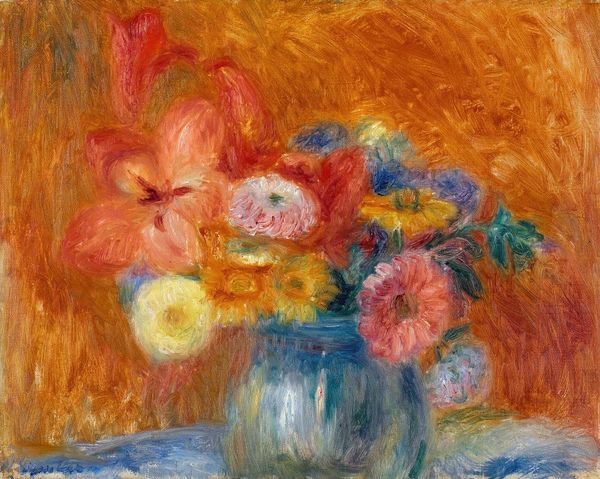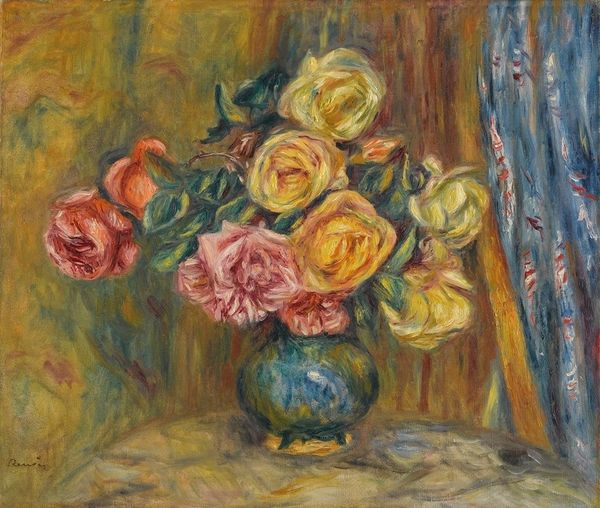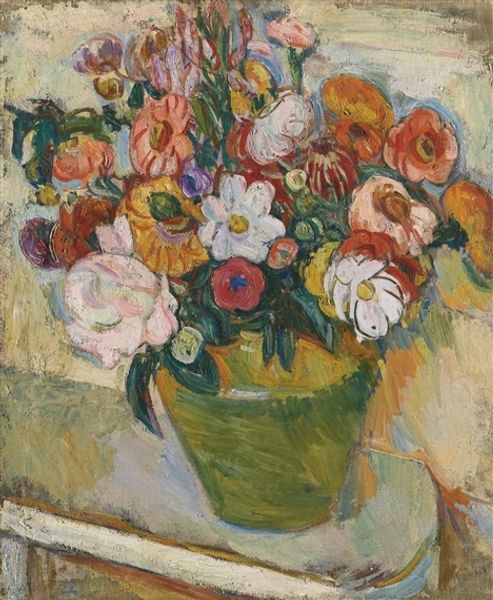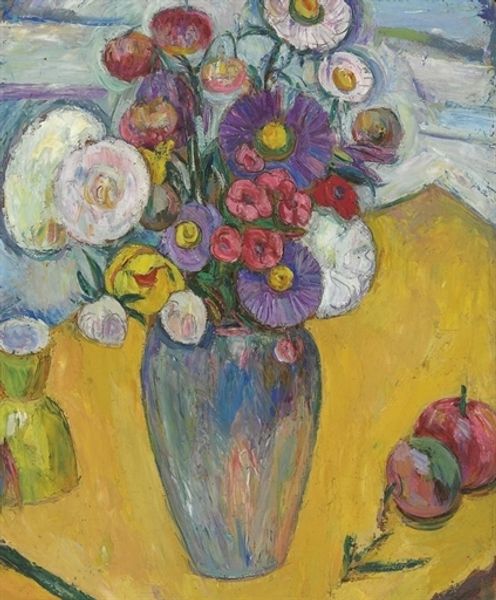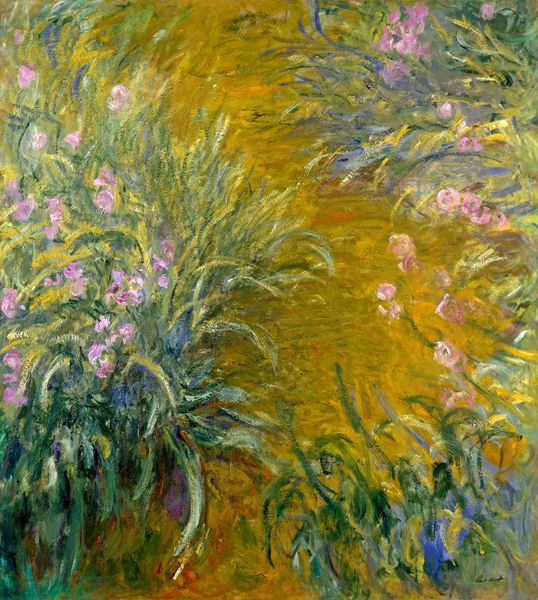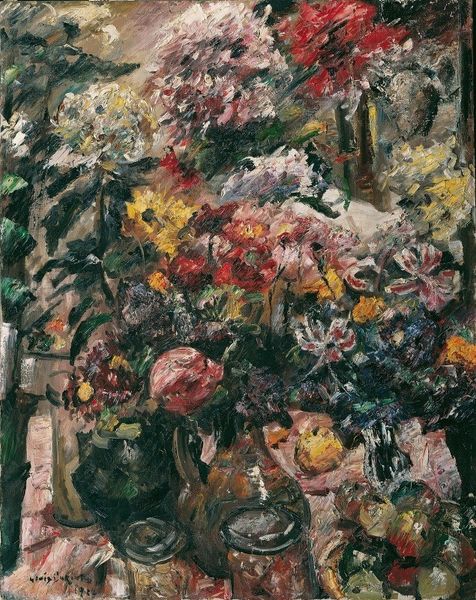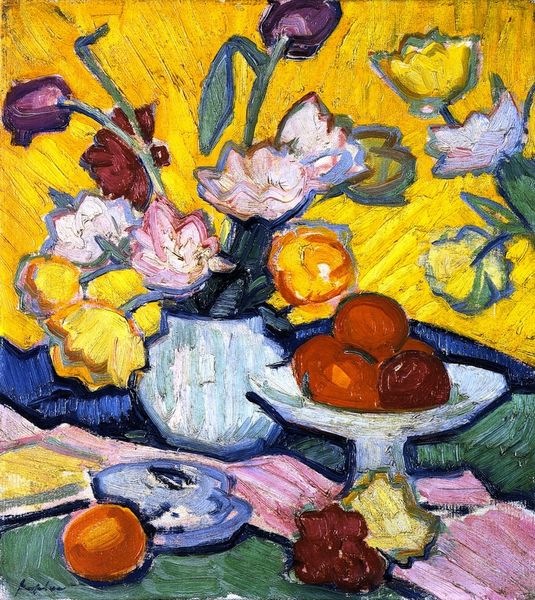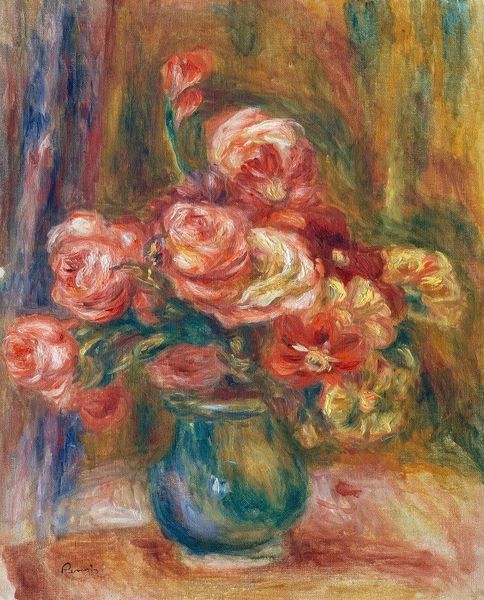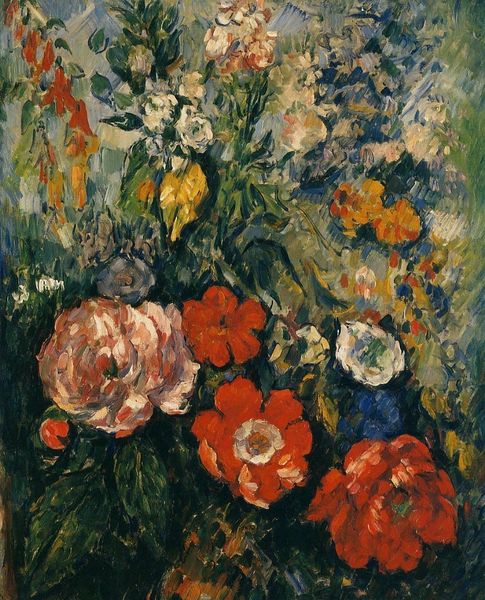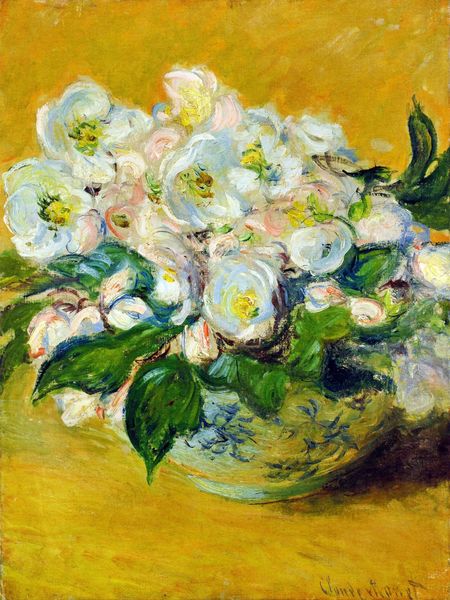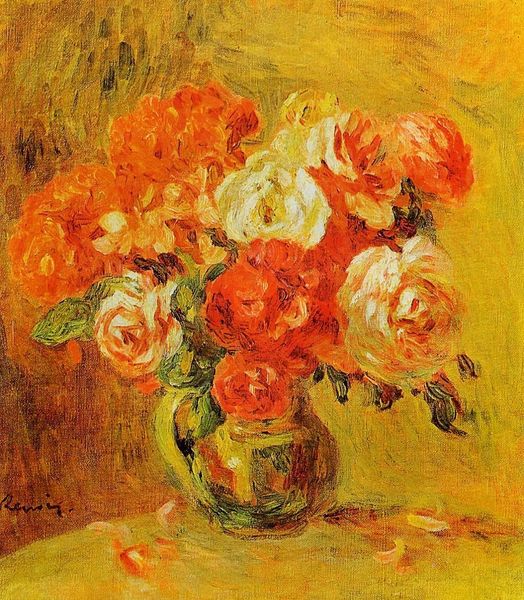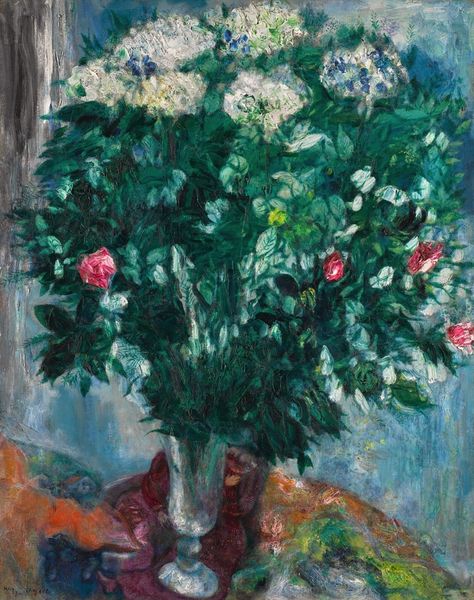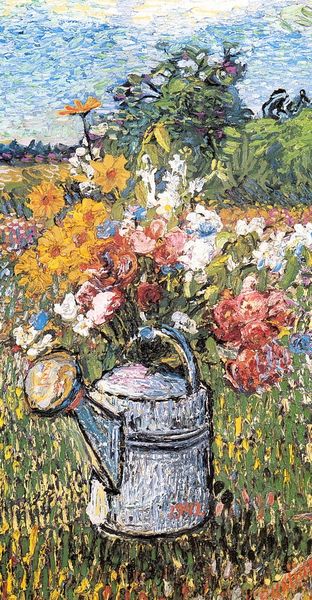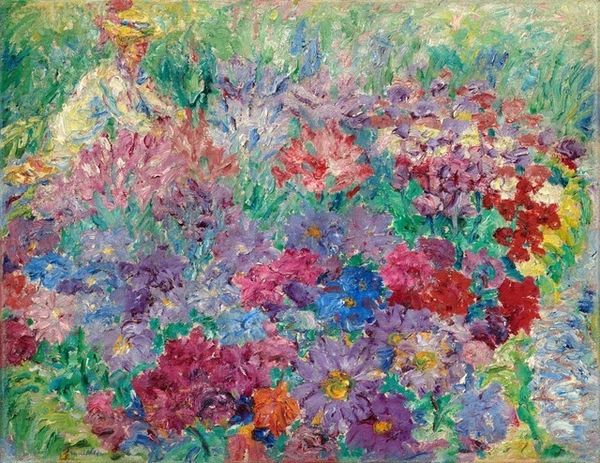
painting, oil-paint
#
painting
#
impressionism
#
oil-paint
#
landscape
#
flower
#
impressionist landscape
#
intimism
#
plant
Copyright: Public domain
Claude Monet's "White Azaleas in a Pot" presents a captivating study in texture and light, achieved through the artist’s distinct brushwork and his attention to the interplay of color. The composition is densely packed, a sea of impasto strokes where the distinct forms of flowers and leaves dissolve into an overall field of tactile sensation. Monet uses short, broken strokes of white, yellow, and blue to construct the azaleas, creating a vibrant luminosity that contrasts with the darker, more muted tones of the pot and background. This technique exemplifies impressionist principles, capturing the fleeting effects of light and atmosphere. What is particularly intriguing is how Monet disrupts traditional representation. The azaleas aren’t realistically rendered; instead, they are suggested through dabs of paint that emphasize the act of painting itself. The artwork transcends mere representation, becoming a study of perception and the materiality of paint. It challenges fixed notions of form and perspective, reflecting broader shifts in artistic and philosophical thought. The painting's formal qualities invite us to reconsider the relationship between representation and abstraction, and how art can convey meaning through its inherent visual language.
Comments
No comments
Be the first to comment and join the conversation on the ultimate creative platform.
